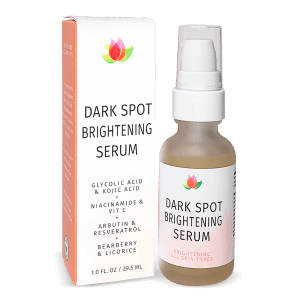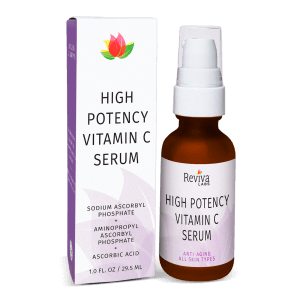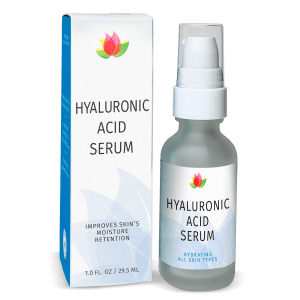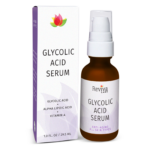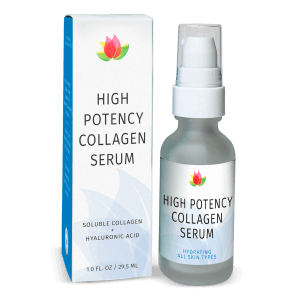Ingredients, Natural, Reviva Labs, Skin Care
The Skin Benefits of Ursolic Acid
The quest for effective skincare ingredients continues to lead researchers to the power of plant-derived compounds. Ursolic acid, a natural triterpenoid found in apple peels, rosemary, thyme, and basil, offers an impressive range of benefits for the skin. Though not as widely recognized as vitamin C or retinol, it delivers remarkable anti-aging, anti-inflammatory, and protective properties. With its ability to boost collagen, improve skin barrier function, and defend against environmental stressors, ursolic acid is a botanical powerhouse that deserves attention.
A Plant-Based Compound That Strengthens and Protects
Plants produce ursolic acid as a protective mechanism against environmental damage, and when applied to the skin, it works in a similar way. It strengthens the skin’s defenses, making it more resilient to pollution, UV exposure, and oxidative stress. Free radicals generated by the sun and other external aggressors can accelerate the aging process, leading to wrinkles, dullness, and loss of elasticity. Ursolic acid helps neutralize this damage, allowing the skin to retain its firmness and youthful radiance.
Antioxidants play a crucial role in maintaining skin health, and ursolic acid functions as a potent shield. It supports the body’s natural repair process by stimulating fibroblasts—the cells responsible for collagen and elastin production. Over time, this leads to firmer skin with improved texture and elasticity.
A Natural Ally in the Fight Against Aging
Collagen degradation is one of the primary reasons skin loses its youthful appearance. As collagen levels decline, fine lines become more visible, and skin begins to sag. Ursolic acid has been shown to enhance collagen synthesis while inhibiting the enzymes that break it down. With continued use, skin appears firmer and more resilient.
Hydration is another essential factor in maintaining a smooth, plump complexion. Ursolic acid strengthens the skin barrier, reducing moisture loss and helping skin retain hydration more effectively. For those struggling with dryness or sensitivity, this reinforcement can make a visible difference in skin texture and comfort.
A Solution for Redness and Sensitivity
Inflammation is a common underlying cause of skin irritation, acne, and premature aging. Whether due to environmental factors, stress, or an impaired skin barrier, inflammation can lead to redness, uneven tone, and discomfort. Ursolic acid helps calm these reactions by reducing the inflammatory response in the skin.
Chronic inflammation can also contribute to pigmentation issues, making dark spots more persistent. By soothing irritation and supporting cellular repair, ursolic acid helps restore a more even complexion. Its ability to reduce redness while promoting healing makes it particularly beneficial for sensitive or reactive skin.



A Clearer Complexion with Fewer Breakouts
Breakouts often occur when bacteria, excess oil, and dead skin cells accumulate within the pores. Ursolic acid has demonstrated antibacterial properties that help combat acne-causing bacteria while also regulating oil production. This dual action helps reduce the frequency of breakouts and promotes a clearer complexion.
Oily skin tends to overproduce sebum, which can lead to clogged pores and inflammation. By modulating oil production, ursolic acid creates a more balanced environment, preventing the conditions that lead to breakouts. The added benefit of its anti-inflammatory properties helps reduce post-acne redness, making it a valuable addition to acne-prone skincare routines.
A Brighter, More Even-Toned Appearance
Uneven skin tone can result from sun exposure, hormonal changes, or past breakouts. Ursolic acid works to minimize the appearance of dark spots by interfering with melanin production. This makes it an effective ingredient for those looking to achieve a more luminous complexion.
Pigmentation concerns often persist when inflammation triggers an overproduction of melanin. Since ursolic acid calms inflammation, it helps prevent future discoloration while gradually improving the appearance of existing dark spots. Over time, skin looks brighter and more even in tone.
The Best Ways to Incorporate Ursolic Acid into Skincare
Many botanical extracts naturally contain ursolic acid, making it accessible through plant-based skincare formulations. Products infused with apple, rosemary, or thyme extracts provide a steady source of this beneficial compound. Serums, creams, and facial oils enriched with ursolic acid offer targeted delivery, allowing the skin to absorb its protective and reparative properties.
Pairing it with hydration-boosting ingredients like hyaluronic acid enhances its ability to support the skin barrier. When combined with antioxidants such as vitamin C or coenzyme Q10, its protective benefits become even more powerful. While suitable for most skin types, those using other active ingredients like retinoids or exfoliating acids should introduce it gradually to avoid overstimulating the skin.
With its ability to strengthen, protect, and restore, ursolic acid is a botanical ingredient that brings multiple benefits to any skincare routine. Its anti-aging, anti-inflammatory, and brightening properties make it an ideal choice for those looking to maintain a healthier, more radiant complexion.







